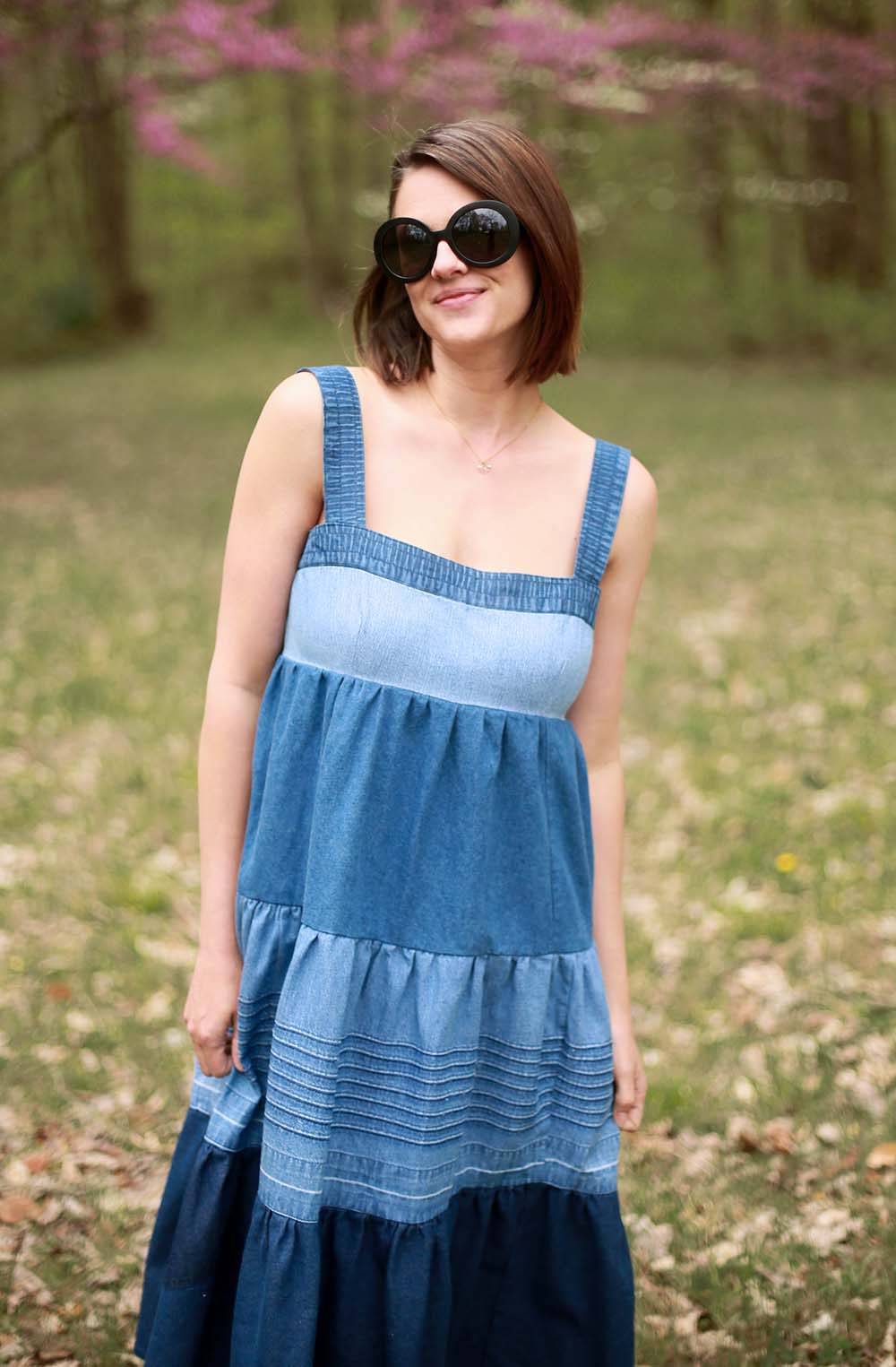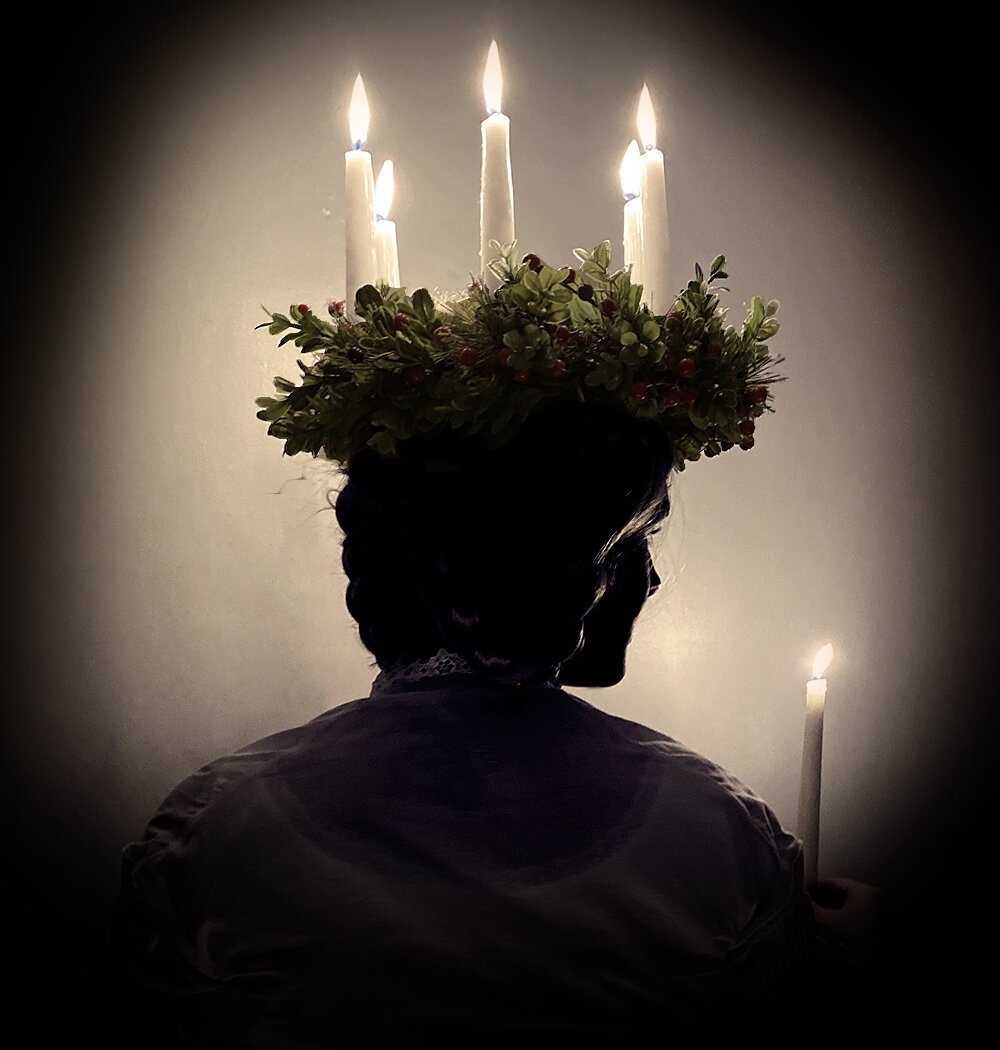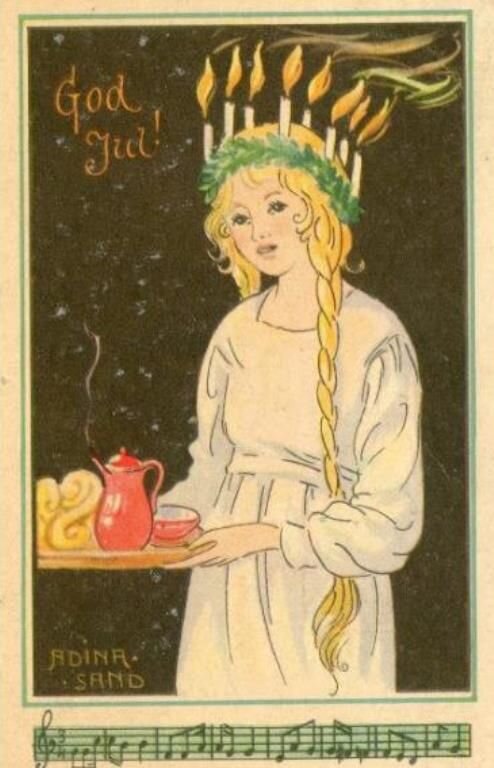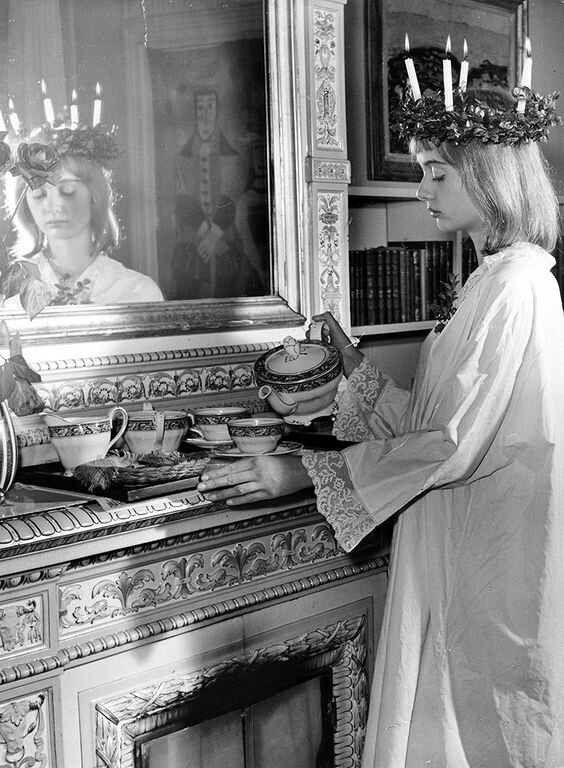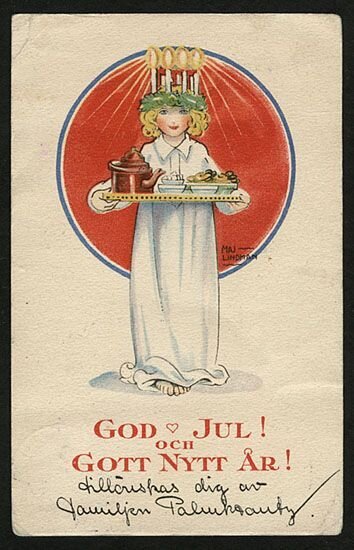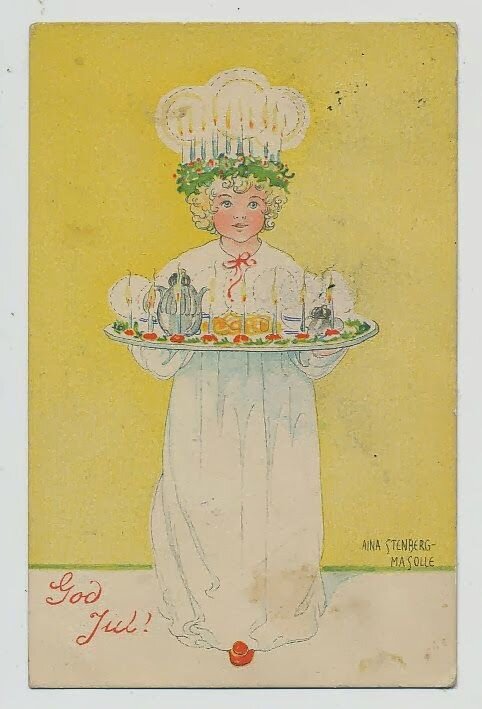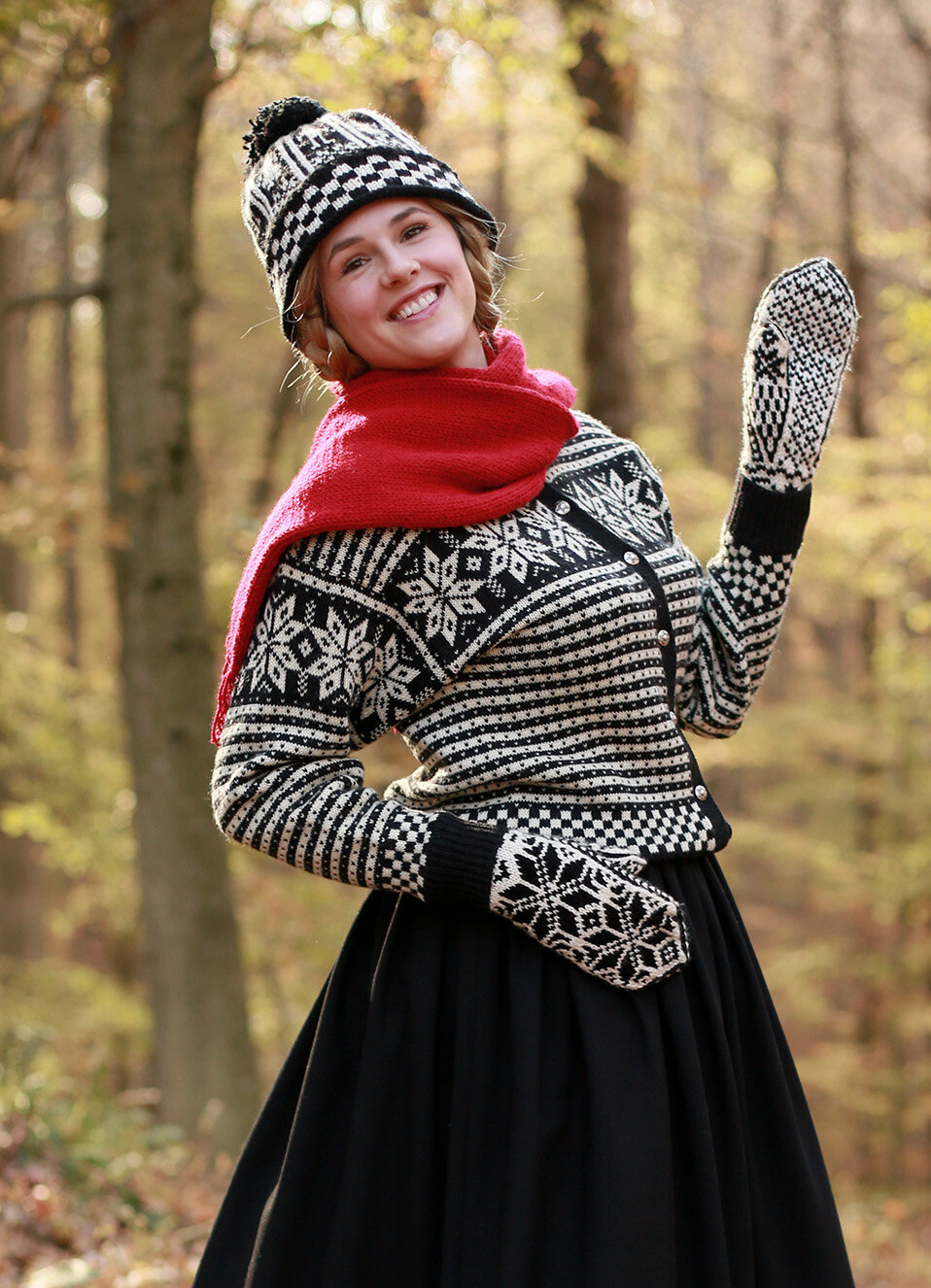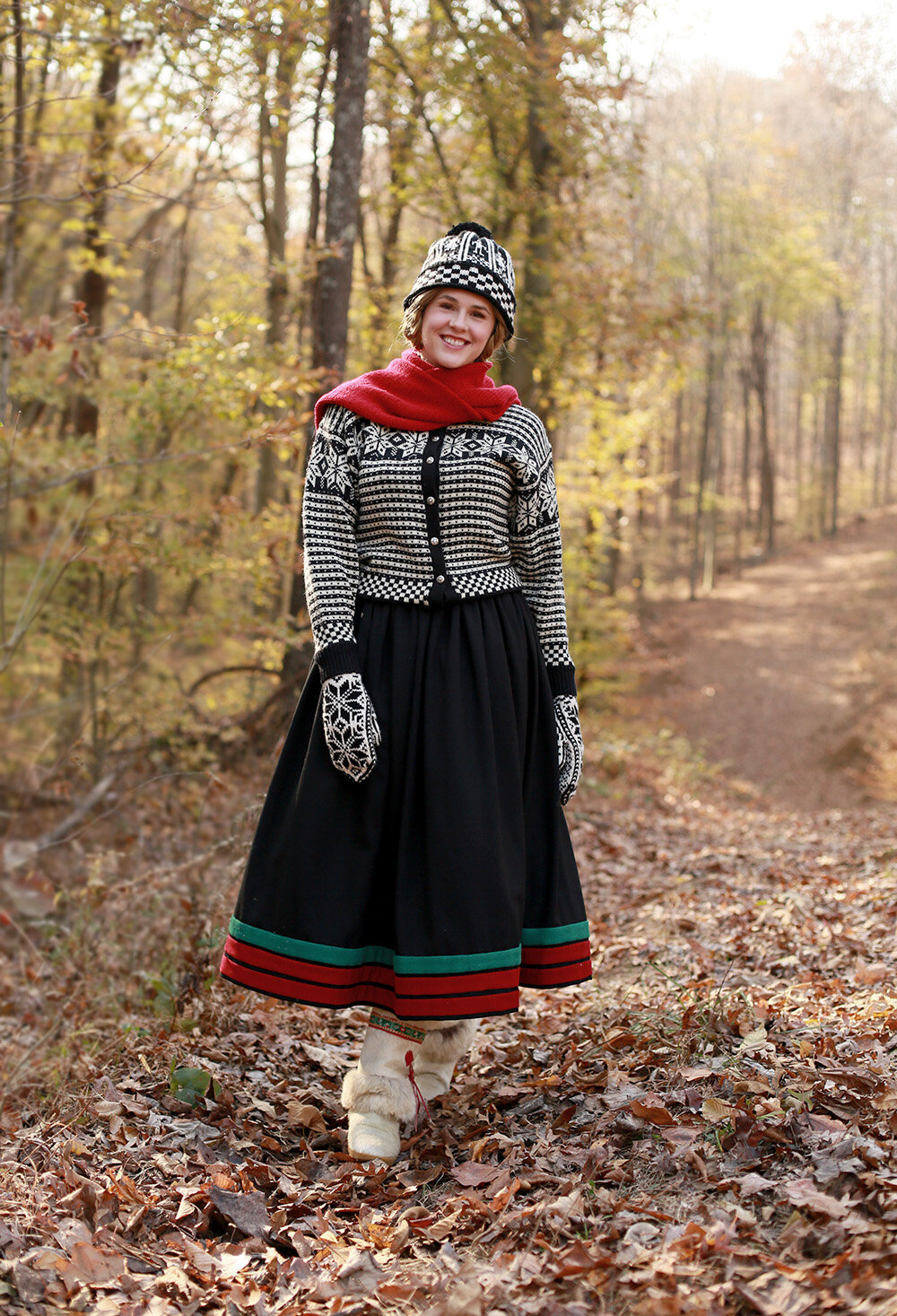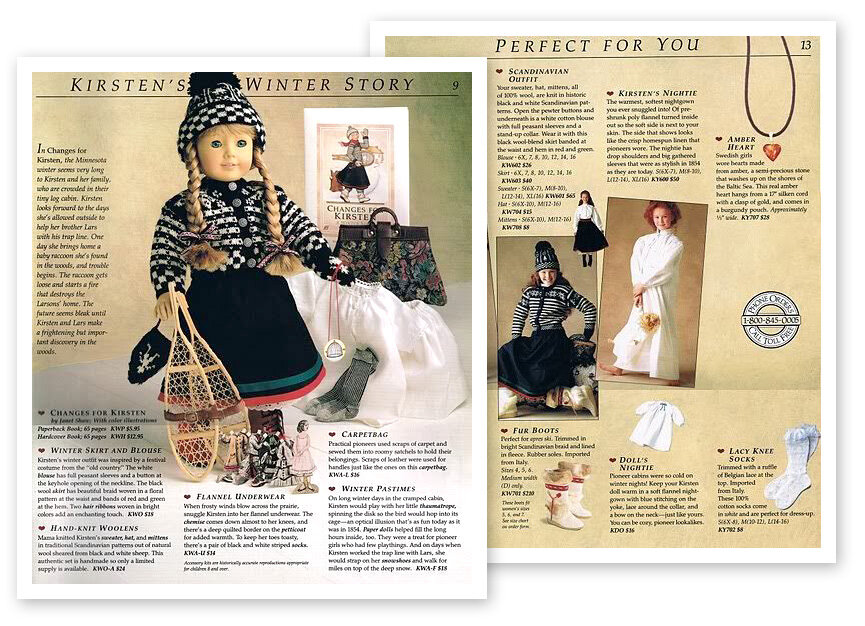The Kirsten Project | Kirsten's Surprise
/Night walks with a heavy step
Round yard and hearth,
As the sun departs from earth,
Shadows are brooding.
There in our dark house,
Walking with lit candles,
Santa Lucia, Santa Lucia!
Night walks grand, yet silent,
Now hear its gentle wings,
In every room so hushed,
Whispering like wings.
Look, at our threshold stands,
White-clad with light in her hair,
Santa Lucia, Santa Lucia!
Darkness shall take flight soon,
From earth's valleys.
So she speaks
Wonderful words to us:
A new day will rise again
From the rosy sky…
Santa Lucia, Santa Lucia!
Good Yule, everyone! In preparation for Lucia’s Day this Friday, December 13th, I’ve recreated Kirsten’s holiday look from Kirsten’s Surprise. If you’re new around here, let me tell you more about my project! I’m recreating the cover looks from my favorite girlhood fictional character - American Girl Kirsten Larson, a Swedish immigrant to American in the mid 19th century. I’m researching each of her main outfits through a historical and cultural lens, doing my best to guess what the designers at Pleasant Company referenced when they developed her character. So far, I’ve recreated my historically accurate take on Meet Kirsten and Changes for Kirsten and posted those looks plus my background research here on my blog. Check out my inspiration board for Santka Lucia throughout history here.
I’m more focused on how the holiday tradition has evolved in Sweden than the Catholic origins, but if you’re into that, I encourage you to read up on it! In Sweden each town or school elects one little girl to play the part of Lucia and lead a procession. School is closed early that day so families can celebrate together (does that mean adults get out of work early too?) In some places there are bond fires to ward off evil spirits, which sounds pretty pagan to me! In Kirsten’s family, Saint Lucia’s Day is the start of their Christmas season.
From the Sweden.se website:
The first recorded appearance of a white-clad Lucia in Sweden was in a country house in 1764. The custom did not become universally popular in Swedish society until the 1900s, when schools and local associations in particular began promoting it. The old lussegubbar custom virtually disappeared with urban migration, and white-clad Lucias with their singing processions were considered a more acceptable, controlled form of celebration than the youthful carousals of the past. Stockholm proclaimed its first Lucia in 1927. The custom whereby Lucia serves coffee and buns (lussekatter) dates back to the 1880s.
Kirsten’s holiday outfit was worn on Saint Lucia’s Day, a solstice celebration on the darkest day of the year (when the Feast of Saint Lucia became a popular holiday in Scandinavian countries, the Julian calendar was still in use, which is why Lucia’s Day falls on the old winter solstice, December 13th, and not the modern one using the Gregorian calendar, on December 21st). The eldest daughter in each family would go room to room in the early morning hours, wearing a white gown, red sash and lit crown with baked treats and hot coffee saying “Saint Lucia invites you to breakfast!” When I was a young girl, my own dad helped me make Swedish rice porridge for breakfast (using the first Pleasant Company cookbook!) and I’m so excited to make it again this week for our little family celebration!
Saint Lucia’s Crown
There really is something awe inspiring about a crown of lit candles - I felt like a goddess carefully balancing it atop my head!
Crowns of flowers and foliage have been worn during times of celebration across cultures and millennia. Think of ancient Greeks and their laurel wreaths or the olive leaf crowns given to olympians. In the mid 19th century Queen Victoria popularized flower crowns after she wore one at her 1840 wedding to Prince Albert.
Lucia’s Day crowns are can be left plain or decorated with evergreen lingonberry branches and berries. I mixed a few different faux greens together and wired them around the base with floral wire. I considered fresh leaves, but I hope to bring this same crown out for the holidays year after year (eventually Beatrix will wear it!) so faux it is! Lastly I placed six inch white candles in their holders. The number of candles seems to vary depending on the structure of the crown base (and associated symbolism), but Kirsten has six candles in hers, so that’s what I went for as well!
When I started planning my crown, I knew I’d need to go further than the grapevine wreath Kirsten and her cousin fashion in the book. Aesthetics aside, my main goal was to keep all of my candles upright at the same angle and well secured to avoid any wax burns. (Be smart about using candles in any setting; lit candles should be out of reach (and off the heads) of small children)
Here’s how I made my crown as safe as possible: first I created a paper template by tracing one of my wooden hat blocks. Once I had the perfect fit, I transferred that oval shape to thin plywood and cut it out using a band saw. Next, I drilled holes around the crown to snuggly fit the thrifted candle holders (which were mounted to dowel rods). It sounds a little more complicated than it actually was and only took 20 minutes from first cut to drying in clamps. Check this out to see what I mean. After the base was dry, I gave it a quick coat of dark spray paint so the light wood tones wouldn’t show through.
Gown and Sash
The white gown and red sash worn by the girl portraying Saint Lucia represents the Catholic symbols purity and martyrdom.
For my dress I actually made two separate pieces - a blouse and petticoat that I can re-wear with other costumes (a white nightgown seems to be the garment of choice for many girls throughout history). In true pioneer fashion I’m practical AF. My blouse is the same bodice and sleeves as my Meet Kirsten dress, which is based on an extant dress from the 1850s. I made mine unlined with the hope that I might pair it with vintage Levis for modern wear too! The original dress had a very slight overlap at center front with no buttons, but I may eventually add some. I also tacked on some pretty antique lace to both the collar and cuffs.
My skirt has a wide 13 foot circumference at the hem and is knife pleated into a simple twill tape waistband with ties on both the left and right side (which I actual wrap around and tie in front and back). This kind of skirt can get a lot of mileage with both my 18th and 19th century costumes as a petticoat.
The red sash I’m wearing at my waist (which i realize is hard to see!) is made of left over red velvet from Bea’s hooded cape. I love how rich and old fashioned red velvet looks and I’m glad i could make use of some scraps! It’s all pined into place!
Breakfast Tray
Lastly I found a little wooden tray at the thrift shop which I painted blue just like Kirsten’s. I didn’t do any baking just for this photoshoot - I’m low on saffron for my lussekatter, so I’ll save it for making my Lucia buns on the actual day. We plan on having breakfast by candlelight on Decemeber 13th with my parents and then opening presents. Now that my children are getting bigger the yuletide season seems all the more magical! No matter how you celebrate, we wish you Happy Holidays!!

